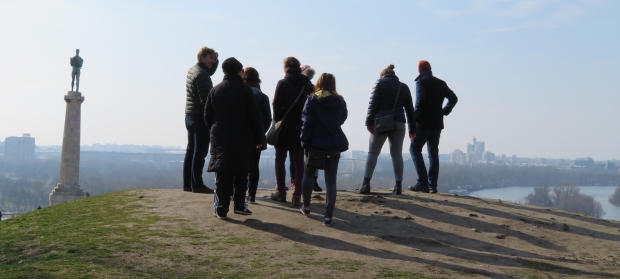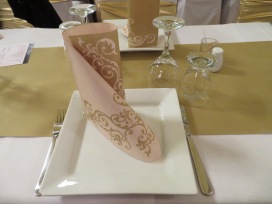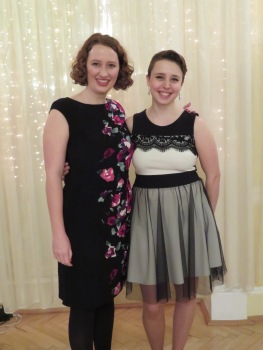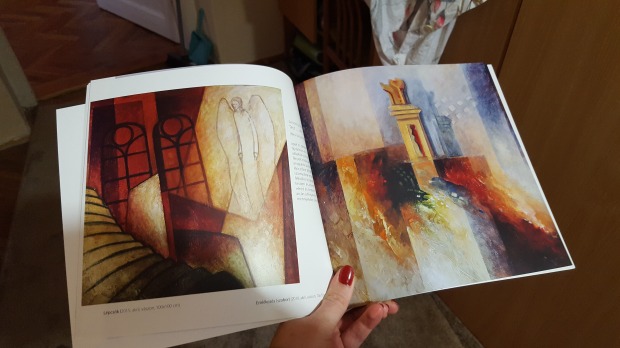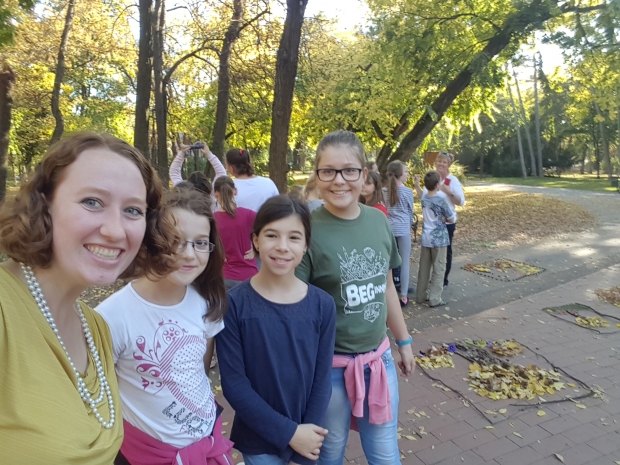Advent is a season of joy. It is a season of preparation for the celebration that comes in Christmas. And, most importantly, it is a season of waiting and anticipation.
This will be my first Christmas I spend away from home and away from family. I think about the ways we prepared in my family for the coming of Christmas over the years.
Putting up the tree, decorating it with boxes and boxes of ornaments, some very nice, others I made out of construction paper when I was four years old, and even the elf’s feet broken off an old elf ornament that my sister, Kayla, insisted on hanging up every year.
We would hang the stockings over the fireplace (mine’s the one with Santa Clause on it) and count down the days before Christmas using the alphabet Advent calendar (which Kayla and I have had memorized for years now).
We would sit on the couch at night and watch cheesy Christmas movies. On Wednesday nights, we would often go to church for soup and a Holden evening prayer service. And, in one of the evenings leading up to Christmas, we would go on our annual Christmas light tour, driving around random neighborhoods looking at all the Christmas lights.
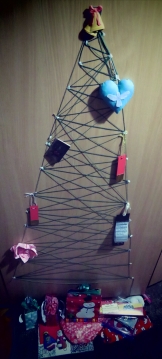
My funny little Christmas tree.
While I am sure I will once again return to these traditions, my Christmas preparations in Hungary have often looked different, but no less meaningful. While I do still watch cheese Christmas movies on my computer at night sometimes, the tree I’ve been decorating is 2-d and made of embroidery floss strung up on my wall.
This has been an advent season defined, in many ways be Christmas crafts. We have been making a variety of Christmas crafts each week over the last month at both the day center for adults with disabilities where I work and the elementary school art classes that I help out with. There was even a crafting session for teachers at the school where I attended. And, at the church in Békés, where I attend youth worships on Saturday nights, there was a kid’s activity and craft day that I was able to help out with.
It has been a joy to watch my home here look a little more festive each week with the new crafts added to the walls. It is definitely starting to look a lot like Christmas.
Another magical experience during this season has been the joy of visiting Christmas markets in cities around Hungary. My first Christmas market of the season was in Budapest. A couple of friends, who are currently students, studying at universities in Budapest invited me to visit them for the day and see the market there. It was definitely the biggest market I went to.

Christmas Market in Budapest.
The next markets were in Szeged, a college town in southern Hungary. I had the opportunity to join Erika, one of the English teachers at my school, for a day trip there, along with fellow YAGM volunteer, Michelle. We also met up with Anna, who is the YAGM volunteer serving in Szeged this year. Among other things, we visited two different Christmas markets there, both of which were lovely.

Christmas market in Szeged.
Finally, the smallest of the markets, and somehow the last one I visit was the one in Békéscsaba, where I live. (It was also the only one with a ferris wheel bumper cars, so it has that going for it.)

Christmas market in Békéscsaba.
Each Christmas market was unique and beautiful. Each stall was filled with new treasures and gifts for the holidays, much of which was handcrafted by the person standing behind the counter. It was fun to just walk around and look. Plus, there was always good food and drinks: kürtőskalács (chimney cakes), roasted chestnuts, stuffed cabbage, mulled wine and Christmas tea. One of my favorite times to see the markets is in the evening when all the lights are turned on. It’s gorgeous!
Well, now the wait for Christmas is almost over and over the next few days advent will come to a close and I will have the opportunity to experience Christmas and celebrate the birth of Jesus here in Hungary!
Boldog Karácsonyt! Áldott Karácsonyt!
Merry Christmas! Blessed Christmas!
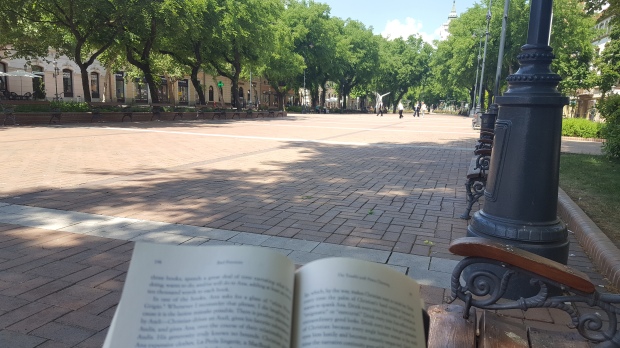
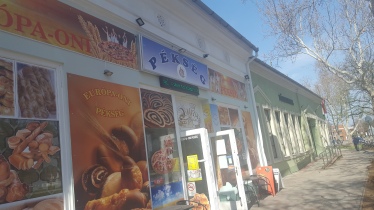
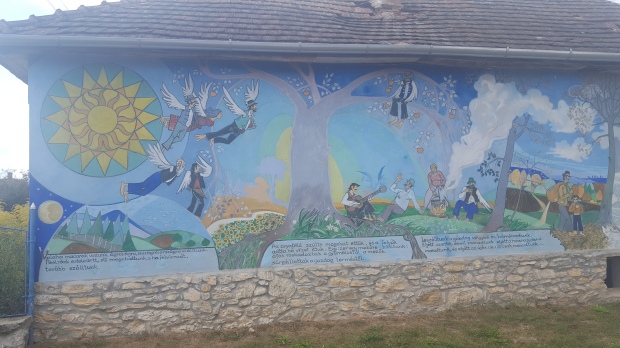
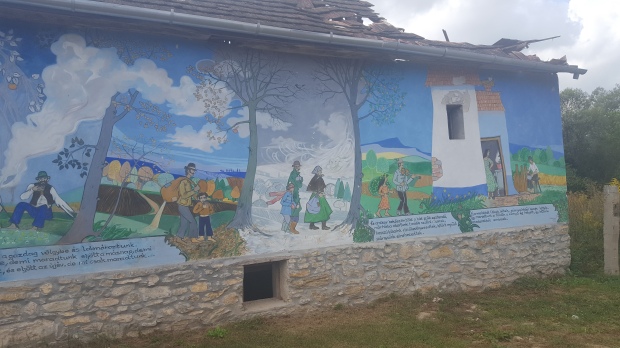
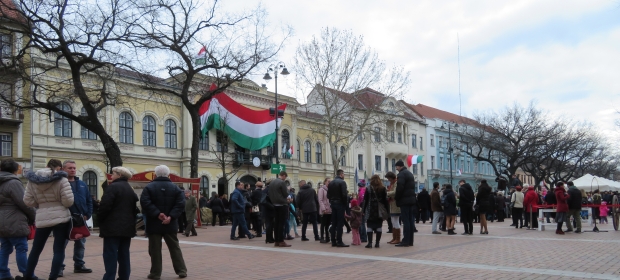
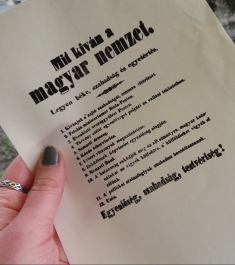 On March 15, 1848, a Hungarian revolution began, standing against the often oppressive rule of Austria’s Hapsburg Empire. Revolutionaries gathered in Budapest, wearing lapels of red, white and green ribbon over their hearts (Hungary’s national colors). They marched through the streets, defying censorship by seizing printing press and printing their
On March 15, 1848, a Hungarian revolution began, standing against the often oppressive rule of Austria’s Hapsburg Empire. Revolutionaries gathered in Budapest, wearing lapels of red, white and green ribbon over their hearts (Hungary’s national colors). They marched through the streets, defying censorship by seizing printing press and printing their 




















